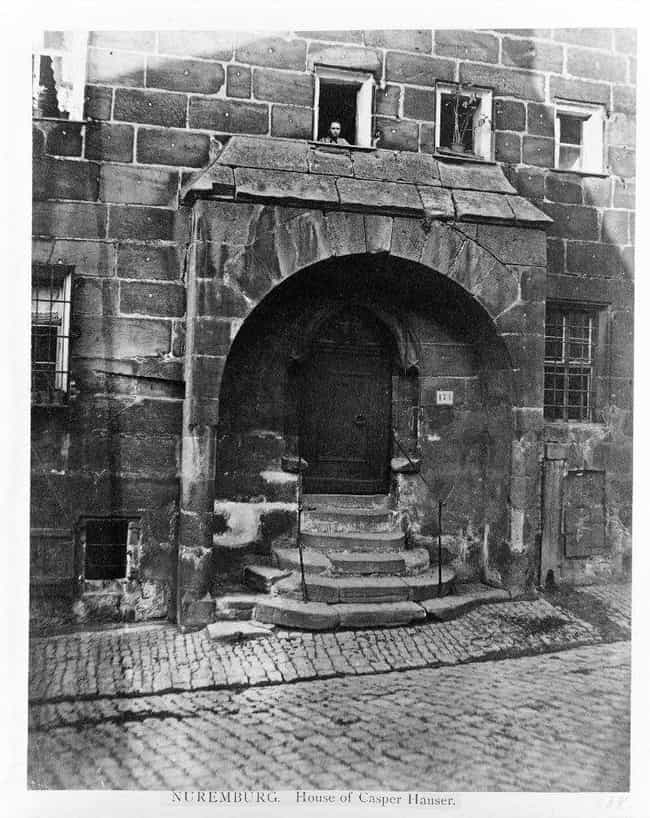For years there have been reports of wild children raised in extraordinary circumstances, including a boy named Kaspar Hauser of Nuremberg, Germany.

The enigma of Kaspar Hauser involves the way he purportedly grew up – in a dark room by himself with few things to stimulate his mental and physical growth. He later gave his name to the condition dubbed Kaspar Hauser Syndrome, defined by a stunted appearance, decreased cognitive abilities, and limited vocabulary. Despite his initial setbacks, Hauser managed to overcome his upbringing and develop exponentially a few years after his release from what was essentially solitary confinement.

When Hauser entered civilization for the first time, he was carrying two letters. They explained the boy had entered his captor’s life as a child. For most of his life, Hauser was banned from leaving his home, but his captor released him so he could join the military.
One letter was seemingly from a poor laborer who said he started taking care of Hauser in 1812 when he was a baby. The other note was allegedly from his mother who explained Hauser’s father, a calvary officer, was dead. The letters seemed to be fabricated, partially because it was later determined they were both written by the same person (possibly by Hauser himself.)
Hauser also possessed a handkerchief with his initials on it, prayer beads, a key, and an envelope with gold dust inside. In a strange bout of coincidence, Hauser also carried a manual titled The Art of Replacing Lost Time and Years Badly Spent.

While authorities figured out what to do with young Hauser, he lived in a jail cell under the protective eyes of jailer Andreas Hiltel. The jailer observed Hauser showed little emotion. He would usually just smile from inside his cell and exhibited no other expressions such as anger, fear, or sadness.
Hauser was content to sit in confinement by himself without needing anything to entertain him. He had a difficult time walking, and he resembled a toddler’s unsteady gait when he did manage to get on two feet. This lends credibility to his story as his mannerisms were in-line with what might be expected from years of minimal human interaction.
After Hauser was purportedly released from his solitary confinement, he claimed he was subjected to three attacks and “attempted assassinations.” The first time, an attacker left a light cut on Hauser’s forehead, the second time he was shot while sitting alone inside, and the third time he was stabbed in the chest while alone in a public garden.
While some might chalk this up to exceedingly bad luck, many believe Hauser orchestrated all the attacks himself, as there were never any witnesses, and Hauser was unable to identify his assailants. On top of that, in the case of the second attack, he later admitted to shooting himself.
Unfortunately, it’s likely one of these self-inflicted attacked ultimately ended his life.
In an unpredictable turn of events, five years after Hauser allegedly came out of confinement, he died from what many believed was a self-inflicted stabbing gone wrong.
The circumstances surrounding his death were suspicious. First, there was a purse left at the scene of the crime containing a handwritten note addressed to Hauser that included personal information about his attacker. Why would an assassin leave this behind?
Second, there was only one set of footprints in the snow where Hauser was stabbed. Many believe Hauser stabbed himself a little harder than he intended to and paid the ultimate price.
When Hauser emerged from his solitary cell, he was only four foot eight inches tall. Facial hair was starting to sprout on his upper lip and cheeks. He was able to write German proficiently after just three years of study. Although he started his education, he remained socially awkward throughout his academic career.
Upon his death around age 21, Hauser had only managed to grow an additional three inches. His condition was further researched, and in 1994, John Money wrote a book about him titled, The Kaspar Hauser Syndrome of “Sychosocial Dwarfism:” Deficient Statural, Intellectual, and Social Growth Induced by Child Abuse.
When Hauser was given beer and sausage for the first time after his release, he didn’t like it at all. Instead, he preferred to eat bread and drink water. He consumed the bread like a hungry animal and didn’t appear to know how to hold the food correctly.
A man named Paul John Anselm von Feuerbach and a school teacher named Friedrich Daumer believed Hauser was a spiritual medium. Their proof? His remarkable skills seeing in the dark and tapping into an occult force known as animal magnetism.
Hauser’s strange mannerisms could also have been due to an undiagnosed medical condition such as epilepsy. Others think he was delusional because of the conditions of his upbringing.
Maybe he was a fraud, maybe we will never know the truth behind this strange boy.
